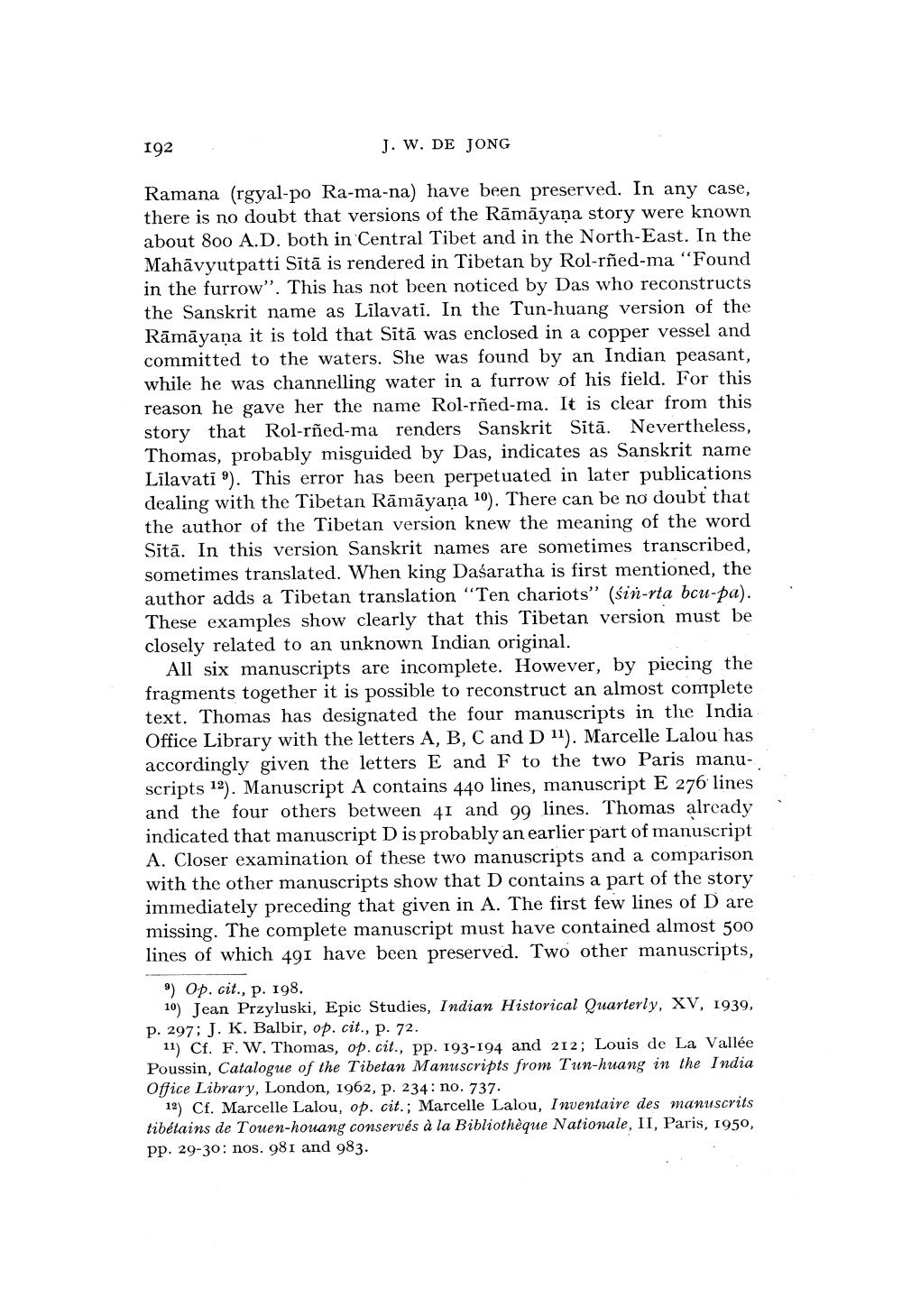________________
192
J. W. DE JONG
Ramana (rgyal-po Ra-ma-na) have been preserved. In any case, there is no doubt that versions of the Rāmāyaṇa story were known about 800 A.D. both in Central Tibet and in the North-East. In the Mahāvyutpatti Sītā is rendered in Tibetan by Rol-rñed-ma “Found in the furrow". This has not been noticed by Das who reconstructs the Sanskrit name as Lilavati. In the Tun-huang version of the Rāmāyaṇa it is told that Sitā was enclosed in a copper vessel and committed to the waters. She was found by an Indian peasant, while he was channelling water in a furrow of his field. For this reason he gave her the name Rol-rñed-ma. It is clear from this story that Rol-rñed-ma renders Sanskrit Sitā. Nevertheless, Thomas, probably misguided by Das, indicates as Sanskrit name Lilavati ). This error has been perpetuated in later publications dealing with the Tibetan Rāmāyaṇa 10). There can be no doubt that the author of the Tibetan version knew the meaning of the word Sītā. In this version Sanskrit names are sometimes transcribed, sometimes translated. When king Dasaratha is first mentioned, the author adds a Tibetan translation "Ten chariots" (sin-rta bcu-pa). These examples show clearly that this Tibetan version must be closely related to an unknown Indian original.
All six manuscripts are incomplete. However, by piecing the fragments together it is possible to reconstruct an almost complete text. Thomas has designated the four manuscripts in the India Office Library with the letters A, B, C and D 11). Marcelle Lalou has accordingly given the letters E and F to the two Paris manuscripts 12). Manuscript A contains 440 lines, manuscript E 276 lines and the four others between 41 and 99 lines. Thomas already indicated that manuscript D is probably an earlier part of manuscript A. Closer examination of these two manuscripts and a comparison with the other manuscripts show that D contains a part of the story immediately preceding that given in A. The first few lines of D are missing. The complete manuscript must have contained almost 500 lines of which 491 have been preserved. Two other manuscripts,
9) Op. cit., p. 198.
10) Jean Przyluski, Epic Studies, Indian Historical Quarterly, XV, 1939, p. 297; J. K. Balbir, op. cit., p. 72.
11) Cf. F. W. Thomas, op. cit., pp. 193-194 and 212; Louis de La Vallée Poussin, Catalogue of the Tibetan Manuscripts from Tun-huang in the India Office Library, London, 1962, p. 234: no. 737.
12) Cf. Marcelle Lalou, op. cit.; Marcelle Lalou, Inventaire des manuscrits tibétains de Touen-houang conservés à la Bibliothèque Nationale, II, Paris, 1950, PP. 29-30: nos. 981 and 983.




